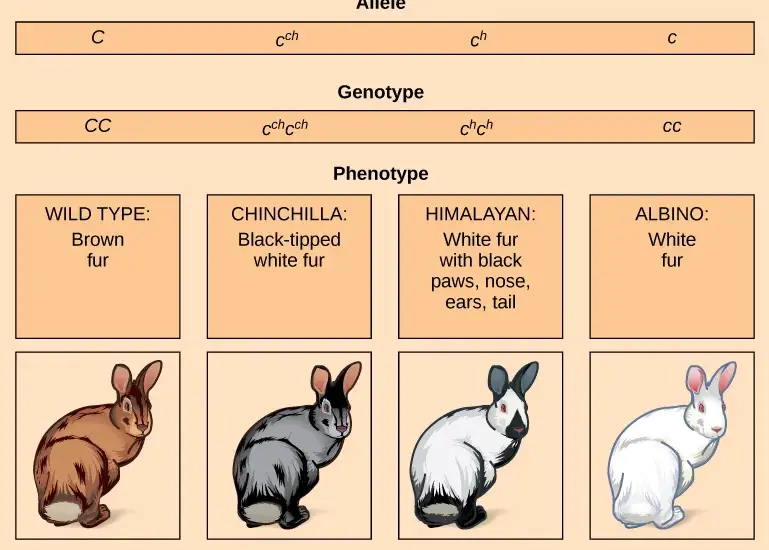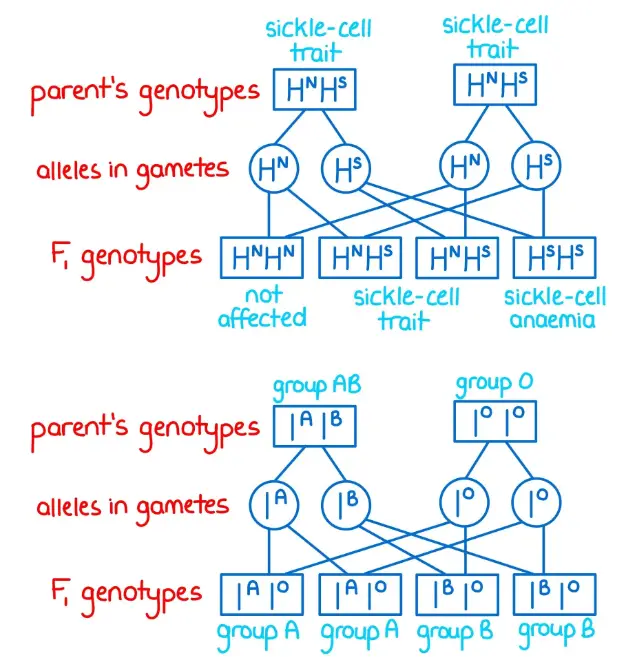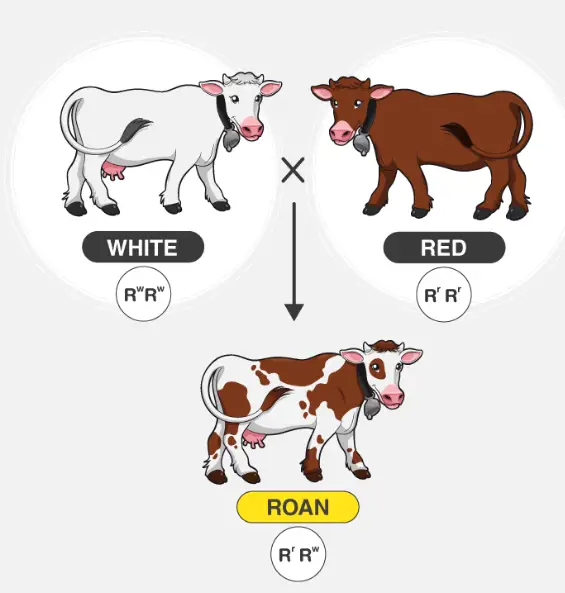Genetic variations are fundamental to the diversity observed within species across the globe. These variations arise from different genetic mechanisms, among which codominance and multiple alleles play significant roles. By studying these genetic interactions, scientists gain insights into the complexities of inheritance that shape the features of organisms.
Codominance occurs when two different alleles of a gene are both expressed, resulting in a phenotype that simultaneously shows both traits without blending. In contrast, the presence of multiple alleles refers to a situation where more than two possible alleles exist for a gene within a population. This genetic scenario is crucial for producing a wide range of phenotypic outcomes among individuals.
The study of codominance and multiple alleles not only enriches our understanding of genetic diversity but also helps explain how certain characteristics are passed from parents to offspring. These genetic principles are instrumental in fields such as medicine, agriculture, and evolutionary biology, influencing everything from disease research to conservation efforts.

Genetic Basics
Definition of Genes
Genes are the fundamental units of heredity in all living organisms. Composed of DNA (deoxyribonucleic acid), genes carry the instructions necessary for the development, functioning, and reproduction of life. Each gene is a specific sequence of nucleotide bases that encodes the information required to synthesize proteins and RNA molecules. Proteins and RNA play critical roles in biological processes, influencing everything from physical traits to disease susceptibility.
Role of Alleles in Genetics
Alleles are different versions of the same gene that arise through mutations. Each individual typically has two alleles for each gene, one inherited from each parent. The interaction between these alleles determines an organism’s traits. For instance, one allele might code for blue eyes, while another codes for brown. The presence of dominant and recessive alleles affects the expression of these traits, with dominant alleles typically overshadowing the effects of recessive alleles unless two recessive alleles are present.
Codominance Explained
Definition of Codominance
Codominance occurs when two different alleles of a gene are both expressed equally in the phenotype of an organism. Unlike simple dominance where one allele suppresses the expression of another, codominance allows both alleles to contribute equally and visibly to the organism’s characteristics.
Examples in Nature
Codominance is easily observed in various natural examples:
- Blood Type in Humans: The AB blood type is a classic example of codominance. Individuals with this blood type inherit one A allele and one B allele, and both types are fully expressed.
- Flower Colors: Certain species of flowers, like snapdragons, can exhibit codominance in their petal colors. A cross between a red-flowered plant and a white-flowered plant may result in offspring with red and white spotted petals.
Multiple Alleles Defined
Concept of Multiple Alleles
While most genetic discussions focus on two alleles per gene, multiple alleles exist when more than two alleles are present within a population. This concept is crucial for understanding genetic diversity and is often observed in genes that influence more complex traits or those with significant variation within a population.
Genetic Diversity
The existence of multiple alleles enhances genetic diversity, which helps populations adapt to changing environments and survive various challenges. This diversity can affect everything from resistance to diseases to variations in physical appearances.
Contrasts and Comparisons
Codominance vs. Multiple Alleles
While codominance and multiple alleles both contribute to genetic diversity and the expression of traits, they are distinct concepts:
- Codominance refers to the manner of expression of two alleles at a single genetic locus, where both alleles are visible in the phenotype.
- Multiple alleles refer to the presence of more than two possible alleles at a genetic locus within a population, but not necessarily within a single individual.
Key Differences
Highlighting the key differences between codominance and multiple alleles can clarify their distinct impacts on genetics:
- Expression: Codominance involves the equal expression of two alleles, while multiple alleles may involve various patterns of dominance and recessiveness among all possible alleles.
- Population vs. Individual: Codominance is observed at an individual level, whereas multiple alleles are a population-wide concept, influencing genetic variation across many individuals.
- Genetic Complexity: Multiple alleles introduce a higher level of genetic complexity and potential combinations, which can lead to a broader range of traits than typically seen with simple codominance.

Impact on Phenotypes
Codominance Effects
Codominance profoundly impacts the phenotypes, or observable characteristics, of organisms by allowing the simultaneous expression of both alleles in heterozygous individuals. This genetic expression leads to unique phenotypic traits that are not blended but rather fully displayed. For example:
- Human Blood Types: In the ABO blood system, both A and B alleles are expressed in AB blood type individuals, resulting in a phenotype that has both A and B antigens on the red blood cells.
- Animal Coat Colors: Certain breeds of cattle exhibit codominance in their coat colors, such as the Roan cattle, which display a mixture of red and white hairs, each color being expressed from different alleles.
Multiple Alleles Influence
The presence of multiple alleles at a single gene locus increases the variety of possible phenotypic outcomes, enriching genetic diversity and adaptability within a population. This influence is pivotal for traits that have a broad range of expressions, such as:
- Eye Color in Humans: Eye color is influenced by multiple alleles, leading to a spectrum of possible colors from blue to brown, depending on the combination of alleles an individual possesses.
- Immune System Variability: The human leukocyte antigen (HLA) system demonstrates the role of multiple alleles in immune response variability, crucial for disease resistance and tissue compatibility.
Case Studies
Blood Type Analysis
Blood types are a classic example of how codominance and multiple alleles can influence human genetics. The ABO blood group system includes three alleles: A, B, and O. The A and B alleles are codominant, allowing both antigens to be expressed simultaneously in individuals with AB blood type, while the O allele is recessive.
- Importance in Medicine: Blood type analysis is critical for safe blood transfusions and organ transplants, highlighting the need to match donor and recipient blood types to avoid adverse reactions.
Flower Color Variations
Flower color variations in certain species, such as snapdragons and four o’clock plants, serve as an educational model for studying codominance and multiple alleles. These plants can express two different colors simultaneously or show a variety of colors due to the interaction of multiple alleles.
- Genetic Study Tool: Researchers use these variations to study the inheritance patterns and molecular basis of gene expression, providing insights into how genetic mechanisms operate in nature.
Genetic Implications
Inheritance Patterns
Understanding codominance and multiple alleles sheds light on the more complex inheritance patterns that differ from simple Mendelian genetics. These patterns include:
- Incomplete Dominance: Unlike codominance, where both traits are fully expressed, incomplete dominance results in a blended phenotype.
- Polygenic Inheritance: Multiple genes influence a single trait, each with multiple alleles contributing to the phenotype’s variability.
Genetic Predictability
The predictability of genetic traits becomes more complex when considering codominance and multiple alleles. Geneticists use probability tools and Punnett squares to predict the likelihood of certain genetic outcomes, but the presence of multiple alleles can complicate these predictions.
- Genetic Counseling: This complexity underscores the importance of genetic counseling in helping individuals understand their genetic risks and the potential traits they may pass on to their offspring.
Frequently Asked Questions
What is Codominance?
Codominance refers to a genetic scenario where two alleles of a gene are equally strong and fully express themselves in the organism’s phenotype. This results in offspring that exhibit both parental traits distinctly, such as in the case of blood types or certain flower color patterns.
How Do Multiple Alleles Affect Traits?
Multiple alleles contribute to greater genetic diversity within a population by allowing more than two allele options for a single gene. This complexity can lead to a wide range of observable traits, depending on which alleles are present in individuals, such as the various colors of rabbit coats.
Are Codominance and Multiple Alleles Common?
While not as common as simple dominance in genetic inheritance, codominance occurs frequently in certain traits, such as blood types. Multiple alleles are also prevalent in populations, particularly in genes that influence survival and adaptation, such as those controlling the immune system.
Can Multiple Alleles and Codominance Occur Together?
Yes, these two genetic mechanisms can coexist. For example, the human ABO blood group is influenced by multiple alleles and also exhibits codominance in cases where both A and B alleles are present, resulting in AB blood type.
Conclusion
The genetic concepts of codominance and multiple alleles provide crucial insights into the biological diversity and hereditary mechanisms. These principles not only help explain the vast array of physical characteristics seen across biological entities but also aid in the advancement of genetic research and applications. By understanding these genetic foundations, researchers continue to unravel the complexities of life, paving the way for innovations in health, agriculture, and ecological management.
In summarizing the roles and effects of codominance and multiple alleles, we appreciate the intricate balance of genetics in shaping the natural world. This knowledge not only enhances our comprehension of biology but also fosters a deeper appreciation for the genetic tapestry that binds all living organisms.

